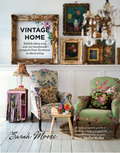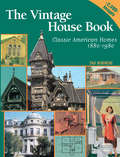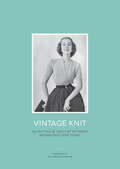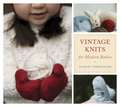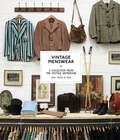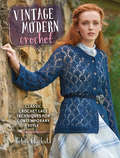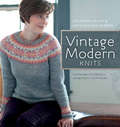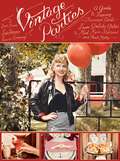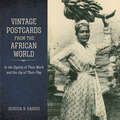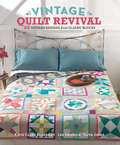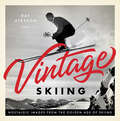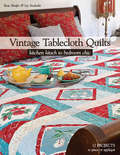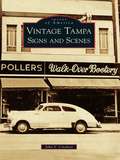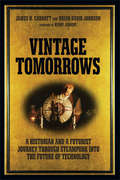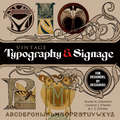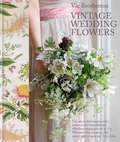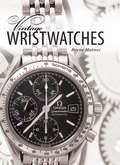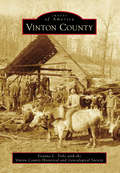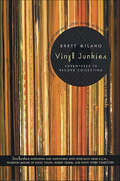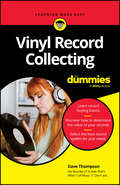- Table View
- List View
Vintage Home: Stylish Ideas And Over 50 Handmade Projects From Furniture To Decorating
by Sarah MooreRecycle, revamp and rejuvenate; with over 50 projects Sarah covers a whole spectrum of imaginative ideas for every room of the house, from blanket curtains to patchwork wallpaper, clever storage crates to fun mobiles for children, as well as unique ideas for dining, sleeping and bathing. Interweaved throughout the book are ideas for 'one thing four ways' to show how the same piece of furniture or a room can be updated with different look, plus handy advice on essential kit and techniques. Aimed at all skill levels, the projects can be completed in a few hours or over a weekend so you can revamp and refurbish your home in no time at all.
Vintage Home: Stylish Ideas And Over 50 Handmade Projects From Furniture To Decorating
by Sarah MooreRecycle, revamp and rejuvenate; with over 50 projects Sarah covers a whole spectrum of imaginative ideas for every room of the house, from blanket curtains to patchwork wallpaper, clever storage crates to fun mobiles for children, as well as unique ideas for dining, sleeping and bathing. Interweaved throughout the book are ideas for 'one thing four ways' to show how the same piece of furniture or a room can be updated with different look, plus handy advice on essential kit and techniques. Aimed at all skill levels, the projects can be completed in a few hours or over a weekend so you can revamp and refurbish your home in no time at all.
Vintage House Book: 100 Years of Classic American Homes 1880-1980
by Tad BurnessFollow the progression of the American home with this latest creation from the Tad Burness studio. This one-of-a-kind collection features historical, exciting, and beautiful homes from 1880 to 1980. Each yearly section presents various styles of houses, kitchens, baths, floor plans, light fixtures, and new developments. Many of the time periods include detailed advertisements with original prices, competing household appliances, and new fads. Representative regions and styles include the kit houses of the early 1900s, Victorian-style homes, and Mediterranean looks. The wealth of information and detail will pique the curiosity of those interested in home restoration, and retro design, as well as architects, real estate agents, interior designers, and members of historical societies.
Vintage Knit: 25 Knitting and Crochet Patterns Refashioned for Today
by Geraldine Warner Marine MalakVintage Knit offers lovers of retro style 25 beautiful knitting patterns from the 1930s, 1940s and 1950s, regraded to fit modern sizes (small, medium and large) and to knit with yarns easily available today. A short introduction describes each garment and suggests how to style it, followed by clear instructions for knitting and making up. Details of the exact yarn used are given to ensure perfect results at home.Each garment is photographed on a model, letting you see how the styles of the past can be part of a very up-to-date look.A useful section on equipment and terminology, plus a list of online resources, gives you everything you need to knit the patterns in the book.
Vintage Knit: 25 Knitting and Crochet Patterns Refashioned for Today
by Marine;Warner GeraldineVintage Knit offers lovers of retro style 25 beautiful knitting patterns from the 1930s, 1940s and 1950s, regraded to fit modern sizes (small, medium and large) and to knit with yarns easily available today. A short introduction describes each garment and suggests how to style it, followed by clear instructions for knitting and making up. Details of the exact yarn used are given to ensure perfect results at home.Each garment is photographed on a model, letting you see how the styles of the past can be part of a very up-to-date look.A useful section on equipment and terminology, plus a list of online resources, gives you everything you need to knit the patterns in the book.
Vintage Knits for Modern Babies
by Hadley FierlingerVintage Knits for Modern Babies presents twenty-five vintage-inspired patterns from the stylish baby knitwear label, Shescraftyknits.com. Owner and designer Hadley Fierlinger shares her lovingly crafted collection of hand-knitted, heirloom-quality garments for infants and toddlers aged six months to three years. From caps, cardigans, and mittens to booties, bonnets, and blankets-each pattern features delicate period details hearkening back to the 1930s, '40s, and '50s while offering modern comfort and a contemporary preference for natural and organic yarns. This is a delightful gift for mothers-to-be, grandmothers, godmothers, aunties, and others, offering a full range of keepsake projects at proficiency levels for beginner, intermediate, and experienced knitters.From the Trade Paperback edition.
Vintage Menswear: A Collection From The Vintage Showroom
by Douglas GunnClassic workwear, sports and military clothingCurated by connoisseurs of vintage clothing, the Vintage Showroom is a vast collection of rare 20th-century pieces that fashion designers and stylists pay to view, using the cut and detailing of individual garments as inspiration for their own work. Offering one-of-a-kind access, Vintage Menswear now makes this unique resource available in book form. Featuring 130 of the most influential examples of 20th-century and earlier European, American and Asian utilitarian tailoring and design, the book is divided into three sections of sportswear, militaria and workwear, covering everything from 1940s flying jackets and polar exploration suits to vintage French denims. Stunning full-page bleeds and front and back views showcase ground-breaking designs in concept, shape and cut. Providing over 300 lavishly illustrated pages of rare, must-see designs, Vintage Menswear is the essential choice of 20th-century vintage tailoring and detailing and an inspirational resource for students and menswear fashion designers and stylists.
Vintage Menswear: A Collection from The Vintage Showroom (Pocket Editions)
by Douglas Gunn Roy LuckettClassic workwear, sports and military clothingCurated by connoisseurs of vintage clothing, the Vintage Showroom is a vast collection of rare 20th-century pieces that fashion designers and stylists pay to view, using the cut and detailing of individual garments as inspiration for their own work. Offering one-of-a-kind access, Vintage Menswear now makes this unique resource available in book form. Featuring 130 of the most influential examples of 20th-century and earlier European, American and Asian utilitarian tailoring and design, the book is divided into three sections of sportswear, militaria and workwear, covering everything from 1940s flying jackets and polar exploration suits to vintage French denims. Stunning full-page bleeds and front and back views showcase ground-breaking designs in concept, shape and cut. Providing over 300 lavishly illustrated pages of rare, must-see designs, Vintage Menswear is the essential choice of 20th-century vintage tailoring and detailing and an inspirational resource for students and menswear fashion designers and stylists.
Vintage Modern Crochet: Classic Crochet Lace Techniques for Contemporary Style
by Robyn ChachulaVintage crochet lace techniques, on-trend garments and accessories! Lace is one of the hottest trends in crochet, but it is by no means a new technique. In Vintage Modern Crochet, best-selling author Robyn Chachula feeds the craze for lace by exploring five classic crochet lace techniques, reinventing them in beautiful, compelling ways. Crocheters will fall in love with the featured tunics, cowls, shawls, pullovers, and even a crochet dress-all thoroughly wearable and on-trend, yet timeless. Each technique-themed chapter features a fascinating introduction: learn about pineapple lace, Bruges lace, filet lace, Irish crochet, and Tunisian crochet. Each design also features a "Technique Tidbit" that will give you valuable insight into working the pattern. Robyn Chachula's vintage-inspired creations are all you need for a trendy one-of-a-kind wardrobe!
Vintage Modern Knits: Contemporary Designs Using Classic Techniques
by Courtney Kelly Kate Gagnon OsbornInspired by traditional knits, up-and-coming designers Kate Gagnon Osborn and Courtney Kelley put their own contemporary spin on knitting in Vintage Modern Knits.Vintage Modern Knits features several different traditional techniques-cables, Fair Isle, lace, colorwork, and more- all showcased in modern, luxurious projects that are fun to knit and even more fun to wear. Divided into three sections (Vintage Feminine, Rustic Weekend, and Winter Harbor), Vintage Modern showcases tailored lines, close fit, and easy-to wear style. These classic, yet contemporary projects are sure to enhance any knitter's wardrobe and be stylish for years to come. Projects range from quick mittens, hats, shawls, and scarves to cozy cardigans and pullovers in a variety of knitting techniques. From classic designs with fashion-forward color schemes to funky cable sweaters for weekend living, each pattern takes its inspiration from classic silhouettes and adds updated twists for unique must-have pieces.
Vintage New York City Subway Signs: 1920s–1980s
by Tod LangeVintage New York City Subway Signs: 1920s–1980s features over 350 historic photographs, chronicling subway signs from the 1920s to the 1980s. Each image showcases the craftsmanship and cultural significance of these transit artifacts and rare collectibles. This book is an invaluable resource for architects, designers, urban planners, and local historians seeking inspiration from New York City's unique design heritage. Renowned transit photographer Douglas Grotjahn contributes his extensive archive of 35 mm Kodachrome color slides and black-and-white images, offering a vivid portrayal of the city's transit history.Features:Over 350 historic photographs of subway signage, with captionsCoverage of porcelain, wood, tin, and mosaic signsDetailed descriptions and historical context for each sign typeRare images from private collectionsPhotographs that capture the essence of life in past decades of American history, creating a vivid time capsule of New York City's neighborhoodsForeword by Douglas Grotjahn, renowned transit photographer and historianVintage New York City Subway Signs: 1920s–1980s captures the essence of New York City's iconic, globally renowned subway system as a canvas for great art, highlighting the diversity and craftsmanship of subway signs. Lange's narrative transports readers through the golden era of New York City's transit history, where signs served not only as directional guides but as distinctive symbols of the city's identity.
Vintage Parties: A Guide to Throwing Themed Events?from Gatsby Galas to Mad Men Martinis and Much More
by Linda Hansson Louise Lemming Emma SundhInvite your nearest and dearest for a celebration¬-vintage style! Vintage bloggers Linda Hansson, Louise Lemming, and Emma Sundh reveal their secrets for throw the best parties, festivities, and fetes with a nostalgic twist. With this beautiful reference for hosting themed get-togethers, you'll create the right old-time atmostphere, play classic games, serve treats and cuisine with yesterday's pomp and flair, and best of all-you'll look the part! Get creative with: Pompoms and balloons for a spring fling "Air-mail" place settings for a '40s theme Nautical cushions, placemats, and decor '50s photobooth props and parlor games Typewriter guestbooks for a Gatsby effect And so much more to create your perfect retro look!Add to that make-up and hairstyles from yesteryear, tips on how to care for a vintage dress, and how to sew the perfect skirt or a festive bow tie. Plus, discover great recipes for modern updates on such time-honored offerings as homemade donuts, apple pie moonshine, cake pops, picnic sandwiches, and, of course, champagne.Packed to the brim with clever do-it-yourself creations from vintage and thrift store finds, Vintage Party is the retro-crafter's dream guide for throwing parties everyone will RSVP yes to. So toast with pastel lemonade-welcome to your vintage party!
Vintage Postcards from the African World: In the Dignity of Their Work and the Joy of Their Play (Atlantic Migrations and the African Diaspora)
by Jessica B. HarrisFor over forty years, professor and culinary historian Jessica B. Harris has collected postcards depicting Africans and their descendants in the American diaspora. They are presented for the first time in this exquisite volume. Vintage Postcards from the African World: In the Dignity of Their Work and the Joy of Their Play brings together more than 150 images, providing a visual document of more than a century of work in agricultural and culinary pursuits and joy in entertainments, parades, and celebrations. Organized by geography—Africa, the Caribbean, and the United States—as well as by the types of scenes depicted—the farm, the garden, and the sea; the marketplace; the vendors and the cooks; leisure, entertainments, and festivities—the images capture the dignity of the labors of everyday life and the pride of festive occasions. Superb and rare images demonstrate everything from how Africans and their descendants dressed to what tools they used to how their entertainments provided relief from toil. Three essays accompany the postcards, one of which details Harris’s collection and the collecting process. A second presents suggestions on how to interpret the cards. A final essay gives brief information on the history of postcards and postcard dating and its increasing use and value to scholars.
Vintage Quilt Revival: 22 Modern Designs from Classic Blocks
by Lee Heinrich Katie Clark BlakesleyVintage Quilt Revival is a resource for quilters of any age or style who love to use today's modern colors and fabrics. With fresh quilt layouts, detailed instructions on foundation piecing, and a wide variety of traditional blocks and modern projects, Vintage Quilt Revival is at the forefront of the burgeoning interest in the "traditional-made-modern" movement. Join the authors and make 20 traditional quilt blocks. Use them to sew a sampler quilt or explore the authors' tips and modifications for making the blocks fresh and appealing and use them to create quilts with a modern flair. Projects range from full-size quilts to a pillow, table runner, bag, and zipper pouch. Learn bits of quilting history throughout the book and see design tips on how to take traditional quilt blocks and piecing techniques and give them a modern spin. If you're already knowledgeable about piecing, basting, quilting, and binding, this book is an essential addition to your library.
Vintage Skiing: Nostalgic Images from the Golden Age of Skiing
by Ray Atkeson Rick SchaferRevisit the glory days of skiing with one of the most famous ski photographers of the era: Ray Atkeson!
Vintage Tablecloth Quilts: Kitchen Kitsch to Bedroom Chic
by Liz Aneloski Rose SheiferPreserve memories and create new family heirlooms—by transforming gorgeous vintage tablecloths into beautiful quilts! Dig into grandma&’s attic, visit a flea market, buy new reproduction panels…even old tablecloths with holes or stains can become part of a lovely quilt. With clear guidance and photos, learn how to convert the best parts of each cloth into quilt blocks and appliqué elements that can be combined with commercial fabrics for extra vibrancy. Customize your design to get the most out of any tablecloth—parcel out a single cloth for multiple projects, or combine pieces of different cloths into one quilt. &“Blue roses in rows, red cherries in bunches, brown pots and pans in golden squares—anyone who has ever been enticed by the colors and styles of vintage tablecloths, like ones produced in the 1920s by Wilendur, will be further delighted by the thought of quilting them…[The authors] cite fabric requirements, measurements, colors, and they clearly describe blocks, construction, and borders with clean graphics for finishing these beauties.&”—Publishers Weekly
Vintage Tampa Signs and Scenes
by John V. CinchettDuring the 1950s, the Cinchett Neon Sign Company came to be Tampa's best-known sign maker. When the city planned to build a zoo, the mayor asked Cinchett to design the new sign. Fried chicken king Colonel Sanders had the sign company create all the neon work for his first two Kentucky Fried Chicken restaurants in Central Florida, and soon after, other reputable businesses came calling.
Vintage Tomorrows: A Historian And A Futurist Journey Through Steampunk Into The Future of Technology
by James H. Carrott Brian David JohnsonWhat would today's technology look like with Victorian-era design and materials? That's the world steampunk envisions: a mad-inventor collection of 21st century-inspired contraptions powered by steam and driven by gears. In this book, futurist Brian David Johnson and cultural historian James Carrott explore steampunk, a cultural movement that's captivated thousands of artists, designers, makers, hackers, and writers throughout the world.Just like today, the late 19th century was an age of rapid technological change, and writers such as Jules Verne and H.G. Wells commented on their time with fantastic stories that jumpstarted science fiction. Through interviews with experts such as William Gibson, Cory Doctorow, Bruce Sterling, James Gleick, and Margaret Atwood, this book looks into steampunk's vision of old-world craftsmen making beautiful hand-tooled gadgets, and what it says about our age of disposable technology.Steampunk is everywhere--as gadget prototypes at Maker Faire, novels, and comic books, paintings and photography, sculptures, fashion design, and music. Discover how this elaborate view of a history that never existed can help us reimagine our future.
Vintage Typography and Signage: For Designers, By Designers (Dover Pictorial Archive)
by Frank H. Atkinson Charles J. Strong L. S. StrongThis versatile reference contains classic typographic images that will inspire the creation of ads with nostalgic flair. The collection consists of commercial signs, images, and fonts from two rare, early 20th-century sources that were used as a reference for sign painters and lithographers.More than 1,400 eye-catching signs and design elements include 25 different fonts and more than 100 full-color images. The compilation abounds in borders, frames, typography, and other graphics, all ideal for recreating styles from the 1890s to the 1920s. Plates from the source books depict the color and black-and-white illustrations in their original usage. From elegant and delicate to big and bold, these images will inspire artists, crafters, and anyone seeking classic vintage accents.
Vintage Wedding Flowers
by Vic BrothersonVic Brotherson believes that wedding flowers should express the character and individuality of a couple. In Vintage Wedding Flowers she provides ideas and inspiration for everything from bouquets to buttonholes, to table dressings, and corsages - and to suit all possible budgets. Chapters include Classic Flora, which considers traditional white and green displays; Graceful Rose, which has soft and graceful arrangements; Crazy Iris, for the more adventurous bride; and Romantic Violet, for those wanting a magical, dreamy feel. Full of beautifully shot colour photographs and helpful, step-by-step instructions, Vintage Wedding Flowers helps you create beautiful, timeless wedding flowers from simple blooms whether you plan to do the flowers yourself or employ someone to do them for you.
Vintage Wristwatches
by Reyne HainesFashion with FunctionStep into the fascinating world of watches. From the early "trench watches" of World War I to some of today's elegant diamond-studded cocktail watches, Vintage Wristwatches will entertain and educate you about these small works of art that have stood the test of time.Whether novice or seasoned collector, you'll enjoy the rich histories of American and European manufacturers past and present. Original newspaper and magazine advertisements complement more than 1,200 photographs of collectible wristwatches, while brief descriptions include values recently commanded at auction.In addition, you'll find:A glossary of watch terminology commonly used among collectorsTutorials for identifying wristwatchesFactors to consider when determining a wristwatch's value
Vinton County
by Deanna L. Tribe Vinton County Historical and Genealogical SocietyWhen Ohio became a state in 1803, settlement of what would become Vinton County had hardly begun. Largely forested then and now, Vinton was carved out of the five adjacent counties and in 1850 became the second-to-last county established in Ohio. McArthur, which later became the county seat with a population of 424, was laid out as the village of McArthurstown in 1815; the village celebrates its bicentennial in 2015, having grown to about 1,700 residents. Although rural in manner, life, and outlook, Vinton Countians have maintained a strong sense of community through both good and bad times in this part of Ohio Appalachia. Images of America: Vinton County features images from the Vinton County Historical and Genealogical Society and photograph collections shared by residents. This book presents a snapshot of the county's history, heritage, and culture--a story seldom presented in print.
Vinyl Age: A Guide to Record Collecting Now
by Max BrzezinskiFrom Carolina Soul Records, one of the world's largest online record sellers, comes the definitive guide to every aspect of record collecting in the digital era. Any music fan knows that there's nothing like the tactile pleasure of a record. Even with access to a variety of streaming services, digital technology has paved the way for the analog revival; from multiplatinum megahits to ultra-obscure private presses, millions of records are available for purchase from all over the world. Vinyl Age is the ultimate post-internet guide to record collecting.Written by Max Brzezinski of Carolina Soul Records, one of the world's largest high-end record dealers, Vinyl Age combines an engaging narrative and incisive analysis to reveal the joys and explain the complexities of the contemporary vinyl scene. Brzezinski demystifies the record game and imparts the skills essential to modern record digging -- how to research, find, buy, evaluate, and understand vinyl in the twenty-first century.
Vinyl Junkies: Adventures in Record Collecting
by Brett MilanoNot too far away from the flea markets, dusty attics, cluttered used record stores and Ebay is the world of the vinyl junkies. Brett Milano dives deep into the piles of old vinyl to uncover the subculture of record collecting. A vinyl junkie is not the person who has a few old 45s shoved in the cuboard from their days in high school. Vinyl Junkies are the people who will travel over 3,000 miles to hear a rare b-side by a German band that has only recorded two songs since 1962, vinyl junkies are the people who own every copy of every record produced by the favorite artist from every pressing and printing in existance, vinyl junkies are the people who may just love that black plastic more than anything else in their lives. Brett Milano traveled the U.S. seeking out the most die-hard and fanatical collectors to capture all that it means to be a vinyl junkie. Includes interviews with Thurston Moore of Sonic Youth, Peter Buck from R.E.M and Robert Crumb, creator of Fritz the cat and many more underground comics.
Vinyl Record Collecting For Dummies
by Dave ThompsonGet on the vinyl train and learn about this captivating hobby Vinyl Record Collecting For Dummies teaches you how to start a collection, grow your collection, and make that collection sound excellent. You’ll learn how to shop for new, used, and rare records, and how to select the turntable that’s right for you. Learn how to determine a record’s value, build your collection on a budget, and properly store and maintain your records. This handy Dummies guide also gives you the background knowledge you’ll need to hold your own in conversations with vinyl enthusiasts—all about music genres, the pros and cons of vinyl types, how records are made, and even the history of record collecting itself. Now you can start collecting rare records, new releases, and everything in between. Learn the basics of buying records at record shops, secondhand stores, and online Determine the value of your collection and learn how to recognize great deals Select the turntable and sound system that are right for your needs Explore the history of recorded music and learn why people are going wild for vinyl This is the perfect Dummies guide for anyone who’s ready to get swept up in the excitement of collecting vinyl records, including beginners and seasoned collectors.
